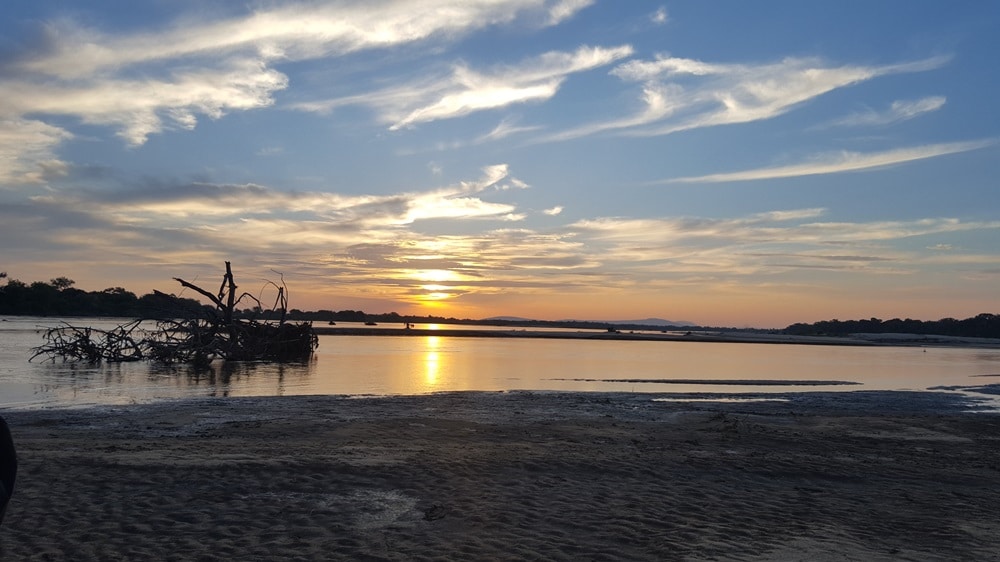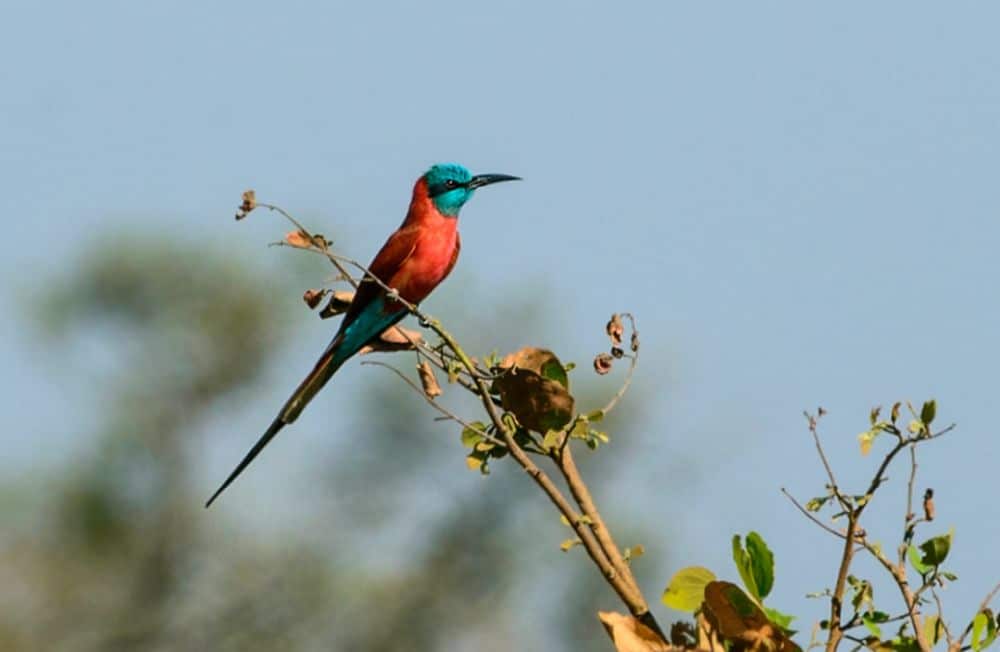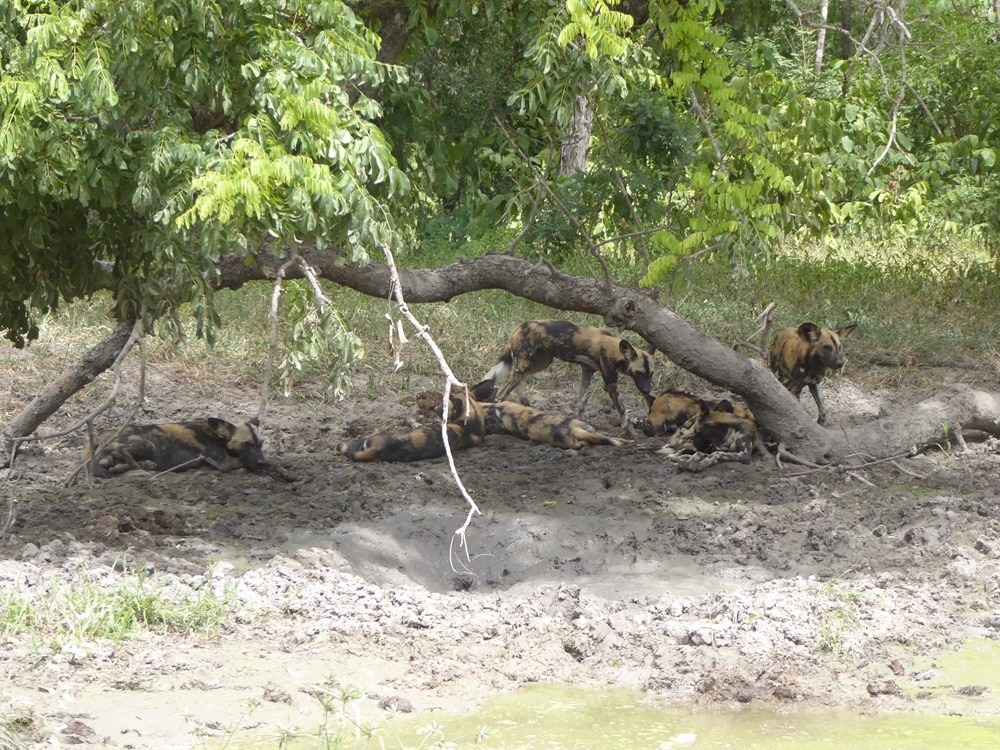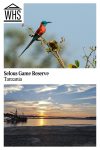Selous Game Reserve
By Melanie
What Is Selous Game Reserve?
Selous Game Reserve, now part of Nyerere National Park, is one of Africa’s largest and most diverse protected wildlife areas, covering over 50,000 square kilometers (19,300 square miles) in southern Tanzania. I had the opportunity to visit this reserve, and I can say it’s unlike any other. Established in 1922, the reserve is famous for its varied landscapes, including lush wetlands, dense forests, and open savannas. These ecosystems are home to a wide range of wildlife species, from elephants to the endangered African wild dog (my favorite animal).

Disclosure: This article contains affiliate links. Making a purchase through an affiliate link will mean a small commission for this website. This will not affect your price. Privacy policy.
The reserve is split by the Rufiji River, and this river is a critical part of the reserve, providing a lifeline to the many species that call it home. During my time there, I was constantly amazed by how remote and peaceful the area felt.
Why Is Selous Game Reserve a UNESCO World Heritage site?
Selous Game Reserve was designated as a UNESCO World Heritage site in 1982, mainly due to its biodiversity and relatively undisturbed natural landscapes. The landscapes are diverse, and some aspects of the park, particularly its “sand rivers” – formed by rainy season water flows that dry up in the dry season – are unique.
According to UNESCO, the site is “one of the world’s largest faunal reserves” and a haven for wildlife, including some of the world’s last remaining African wild dogs and black rhinos. The reserve’s habitats also support large populations of elephants, giraffes, and buffaloes, which are vital for maintaining the balance of the ecosystem.

Being there in person, I could truly appreciate why this site earned such an important designation. It’s not just about the wildlife—there’s a raw, untouched beauty to the landscape that feels like stepping back in time.
World Heritage in Danger
At the same time, the park has been on UNESCO’s list of World Heritage in Danger since 2014. At the time, this was due to excessive poaching that was especially affecting the park’s elephant population.
Since then, UNESCO has issued statements of concern several times about the building of a hydroelectric dam in the middle of the park. They expressed “grave concerns” about the effects this dam project – including the deforestation of almost 1,000 square kilometers (386 square miles) and the creation of a 100-kilometer-long (62 miles) reservoir – will have on the local wildlife.
Nevertheless, the dam project went ahead and the hydroelectric plant is already partly operational. It remains to be seen what effect this will have on the park and whether its construction will lead to UNESCO removing Selous Game Reserve’s World Heritage status.

What can you expect on a visit to Selous Game Reserve?
When I visited Selous, one of the first things I noticed was how large the reserve is. It’s much less crowded compared to other popular parks in Tanzania, and that was a huge part of what I loved about it. You get the feeling of being completely immersed in nature, with vast open spaces and animals roaming freely in their natural habitats. It’s one of the best places in Tanzania to see wildlife.
The boat safari on the Rufiji River was an unforgettable experience. From the boat, I saw a group of hippos relaxing in the water, while crocodiles sunbathed on the riverbanks. The birdlife was equally impressive, with species like the majestic fish eagle and vibrant bee-eaters filling the air.
Game drives in Selous are also fantastic. The reserve is home to elephants, giraffes, buffalo, and with some luck, even the elusive African wild dog. I felt so privileged to witness these animals in such an unspoiled environment. And because the reserve is so vast, you’re not likely to encounter large groups of tourists – it’s a more personal and immersive experience than many other parks.

Is Selous Game Reserve worth visiting?
For anyone looking for an off-the-beaten-path safari experience, Selous Game Reserve is definitely worth visiting. It’s a haven for nature lovers and wildlife enthusiasts. The vast, peaceful landscapes and incredible diversity of animals make it stand out. I would recommend dedicating at least 3-4 days to really appreciate what it has to offer.
You may want to consider adding Selous as part of a broader itinerary that includes other parks like Serengeti or Ngorongoro Crater if you want to witness a large amount of wildlife. But for those who appreciate wildlife in a more tranquil and less commercialized setting, Selous is the place to be.
What sorts of travelers would like Selous Game Reserve?
Selous is perfect for adventurous travelers, wildlife lovers, and birdwatchers (like me). It’s especially ideal for those who enjoy more secluded, serene experiences. You won’t find the crowds here like you would at more famous parks, which can make for a much more intimate and authentic safari experience. Selous will be a rewarding destination.

Tips for visiting Selous
Pack light, but be prepared. Wear comfortable walking shoes for safaris, and make sure to pack binoculars for birdwatching and wildlife spotting. A good zoom lens on your camera is worth taking as well.
Go early. If you’re staying in one of the lodges inside the park, consider going for early morning drives to catch the animals while they’re most active.
Book accommodations inside Selous Game Reserve.
Combine your trip. If you have time, consider visiting nearby Ruaha National Park for a broader Tanzanian safari experience or heading to Zanzibar afterwards so you can relax on the beach.
If you don’t have a lot of time and want to visit for just a day, it is possible on an organized day-trip from Zanzibar. However, you’ll get much more out of the experience if you stay for a few days. Try one of these multi-day trips.
Visit a travel clinic a month or more before you travel. Depending on the time of year, you may need to take malaria tablets. You also may need to update your vaccinations. Take basic medicines along: things like oral rehydration salts, painkillers and bandages. And don’t forget both sun lotion and insect repellent!
Where is Selous Game Reserve?
Selous Game Reserve is located in southern Tanzania, about 220 kilometers (137 miles) from Dar es Salaam.
By car: The reserve is a 6 to 7-hour drive from Dar es Salaam, and there is parking available at various lodges and camps within the reserve.
Compare car rental prices from Dar es Salaam International Airport.
By air: You can also opt for a charter flight from Dar es Salaam or Zanzibar, which will take you to an airstrip within the reserve, such as Mtemere Airstrip.
For more information about Selous Game Reserve, its opening hours, and admission fees, visit the Ministry of Tourism’s website.
Have you been to Selous? If so, do you have any additional information or advice about this UNESCO World Heritage site? Please add your comments below!

